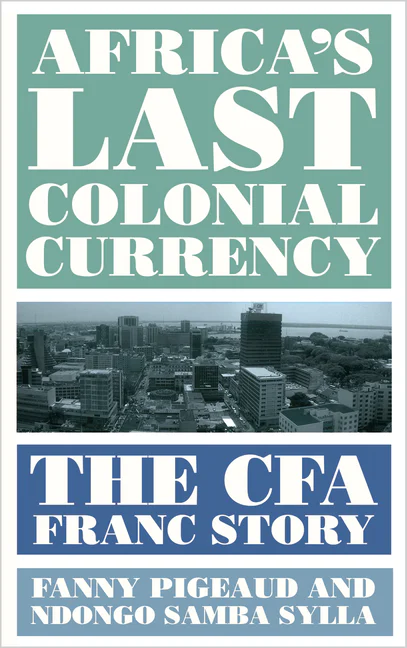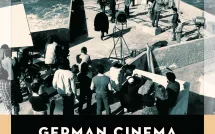
This is part of our special feature on European Culture and the Moving Image.
Film Genres in Hungarian and Romanian Cinema: History, Theory, and Reception
By Andrea Virginás.
Publisher: Lexington Books
Recommended by Temenuga Trifonova
In Film Genres in Hungarian and Romanian Cinema: History, Theory, and Reception, Andrea Virginás draws on Mette Hjort and Duncan Petrie’s notion of “small national cinemas,” Even-Zohar’s cultural polysystem theory, and genre theory, to explore the important role classical and post-classical Hollywood genres have played in the ways in which these two Eastern European cinemas have transitioned from a national, analogue, and communist context to a transnational, digital, and neoliberal one. The author frames her analyses of historical dramas, westerns, horror films, and crime films in terms of post-1989 collective traumas and points to the ways in which (musical) comedies, crime films, and science-fiction/horror hybrids engage with the transition from analogue to digital. The book locates the genre elements of twenty-first century Hungarian and Romanian cinema at the intersection of “the global space of flows and the local ‘space of places’” and illuminates the complex ways in which these films negotiate shared historical traumas and cultural taboos through the reworking of Hollywood genres. The author adopts a comparative perspective to highlight how the complementarity of national, transnational, and regional discourses result from not only Hungary and Romania’s geographical proximity, shared communist and post-communist history, and a long co-production history, but also their shared linguistic and cultural isolation as the only non-Slavic nations in Central and Eastern Europe. Virginás shows that, given the primacy of linguistically coded literature and theater in the small national cultural “polysystem,”genre films adapted from literary and theatrical material have been central to both Hungarian and Romanian film productions from the beginning of the twentieth century on.
The book focuses on tracing the synchronic connections between regional, national, and global genre developments rather than surveying the evolution of different genres within Hungarian and Romanian national cinemas. Virginás’ examination of genre tropes is nonetheless historically and culturally embedded as she acknowledges important differences between the film industries before communist nationalization, when Hungarian cinema was better integrated in the Austrian-German film industry, while Romanian cinema had closer ties to the geographically proximate Balkan cinemas and to the linguistically proximate French cinema. Virginás sees these differences as opportunities to develop a new methodology of hybridizing Central European and Balkan film cultures and industries. She uses the small national model to compare an emerging regional (Transylvanian) cinema with other regional canons such as those of Northern Europe (specifically Denmark and Iceland), in a transnational approach pointing to the many genre elements shared by small national European cinemas. The book challenges the tendency in English-language film scholarship to view Hungarian and Romanian cinema mainly as a reflection of the countries’ respective political histories lacking historical or political significance, and to ignore their aesthetic, stylistic, and genre characteristics, which has led to the absence of any serious studies on popular Hungarian and Romanian genre films.
 Africa’s Last Colonial Currency: The CFA Franc Story
Africa’s Last Colonial Currency: The CFA Franc Story
By Fanny Pigeaud and Ndongo Samba Sylla (translated by Thomas Fazi)
Publisher: Pluto Press
Recommended by Hélène B. Ducros
Translated from the French, Africa’s Last Colonial Currency grants an Anglophone audience access to a history of the CFA franc―the currency that was instituted in France’s African colonies and remained in circulation after they gained independence. The book explains how the “CFA system” came about through the creation of two monetary zones in “French Africa” and effectively highlights how two discourses have been in confrontation, that of the French Republic defending ideals of economic solidarity and benevolence in the aftermath of independence waves, and that of African resistance that sees in the CFA an opportunist “neocolonial currency” designed, implemented, and operated as to perpetuate French economic control and resource extraction out of the continent. This well-written survey of the “franc zone” assesses these opposing claims by contending that the currency has failed as a tool of development and poverty alleviation. Rather, it proposes to approach it in the contemporary era as a “weapon of French neo-colonialism,” from which an exit must be envisaged to end a cycle of dependency and domination. In discussing the possible futures of the CFA monetary environment and in the context of the eco project as a new currency to be created in lieu of the CFA, the book also addresses wider questions about monetary and financial sovereignty and political responses to what many see as antiquated post-colonial arrangements that maintain uneven ties between former colonial empires and their ex-colonies.
In putting forward arguments for how the CFA franc has continued to shape social and political relations in support of Françafrique after decolonization, Fanny Pigeaud and Ndongo Samba Sylla write a comprehensive historical account from the time in which a monetary transition positioned colonial banks in place of exchange systems that were based on indigenous currencies, to current international policy debates implicating various actors―African governments and resistance movements, ECOWAS, the IMF, French corporations and Treasury, and financial and trade markets. The authors seek to reinforce that, instead of a positive agent of change, the CFA franc can be analyzed as an obstacle to development because of a rigid exchange regime that has hindered the integration of credit markets through external control of currency convertibility and pegging. The book not only recommends that African countries’ road to full independence necessitates finding a way out of a “colonial relic,“ but it also delivers a stark macroeconomics lesson in monetary policy. Highly readable, this is an informative book that, in positing an important thesis as a lens through which to understand enduring colonial legacies in Africa, will undoubtedly elicit further conversation. It will be useful for scholars and students of postcolonialism, African history, and economics and political science more generally, to grasp how parts of Africa are still very much tied to the French economy in a system that may be out of breath, as Africans make increasing demands for their right to self-determination to be operative.





